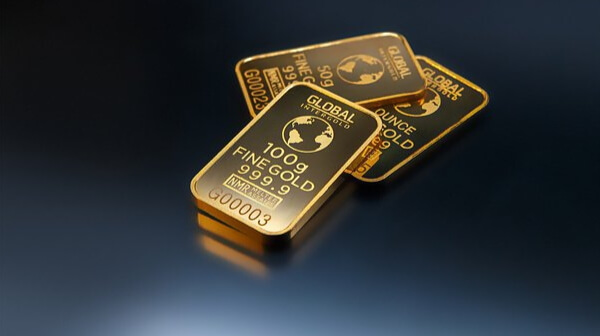How to Invest in Gold: Throughout history, few investments have rivaled gold in popularity as a hedge against almost any kind of trouble, from inflation to economic upheaval or currency fluctuations, to war.
When you think about investing in gold, don’t restrict yourself to just buying physical gold, like coins or bullion. Alternatives to invest in gold include buying shares of gold mining companies or gold exchange-traded funds (ETFs). You can also invest in gold by trading options and futures contracts.
Table of Contents
How to Invest in Gold
How to Invest in Physical Gold
Investing in physical gold can be challenging for investors more accustomed to trading stocks and bonds online. When it comes to physical gold, you’ll generally be interacting with dealers outside of traditional brokerages, and you’ll likely need to pay for storage and obtain insurance for your investment. The three main options to invest in physical gold are bullion, coins, and jewelry.
Gold Bullion
When most people think about investing in gold, bullion is what they think of—big, shiny gold bars locked away in a vault.
Gold bullion comes in bars ranging from a few grams to 400 ounces, but it’s most commonly available as one- and 10-ounce bars. Given that the current gold price is around $1,900 per ounce (as of September 2020), this makes investing in gold bullion an expensive proposition. And unlike stocks, there’s no way to get a fractional share of a gold bar.
Due to gold bullion’s high price, it’s especially important to use a reputable dealer and to pay for delivery—with insurance—or to shell out for storage at a large vault or in a safe deposit box.
If you choose to invest in gold with bullion, it’s also a good idea to stay up to date on the price of gold, so you can pick the right time to buy—most dealers update their prices based on current spot prices.
Gold Coins
The most common gold coins weigh one or two ounces, though half-ounce and quarter-ounce coins are also available. Collectible coins, such as South African Krugerrands, Canadian Maple Leafs, and American Gold Eagles, are the most widely available types of gold coins. Some dealers even sell blanks and damaged or worn coins.
Gold coin prices may not entirely align with their gold content, though. In-demand collectible coins frequently traded at a premium. A one-ounce American Gold Eagle coin, for example, retails for just over $2,000 in mid-September 2020. That’s almost a 5% markup over a comparable amount of gold bullion.
You may be able to find better deals on gold coins from local collectors or pawn shops, but it’s still typically safer to make purchases using a reputable, licensed dealer.
Gold Jewelry
You may also opt to buy gold you can wear—or that someone once wore but has been damaged—in the form of gold jewelry. Investing in gold jewelry, however, carries many risks that investing in pure gold doesn’t.
First, you have to be careful about jewelry purchases as not all secondhand jewelry is sold by reputable dealers. Not only does authenticity matter to you—but it will also matter to anyone you try to resell the piece to. This makes it crucial you buy investment jewelry from a reputable dealer and obtain as much documentation as possible.
Second, you’ll pay some amount of markup based on which company designed and manufactured the jewelry. This could be anywhere from 20% to more than three times the precious metal’s raw value.
You’ll also want to be aware of your jewelry’s purity, or what percentage of gold it is. Gold purity is calculated based on karats, with 24 karats being 100% gold. Lower purity decreases your piece’s melt value, or the raw value of your jewelry’s components if it were melted into pure gold.
Invest in Gold by Purchasing Stock in Gold Miners
Investing in the stock of companies that mine, refine and trade gold is a much more straightforward proposition than buying physical gold. Since this means buying the stocks of gold mining companies, you can invest using your brokerage account.
Some of the most popular stocks in this sector include:
- Newmont Corp. (NEM). Newmont is the world’s largest gold mining company, headquartered in Colorado. It operates mines in North and South America as well as Africa.
- Barrick Gold Corp. (GOLD). This gold mining giant is headquartered in Toronto and operates in 13 countries around the world.
- Franco-Nevada Corp. (FNV). Franco-Nevada doesn’t own any gold mines. Instead, it buys the rights to royalties from other gold miners.
Keep in mind, though, that the shares of stock of gold companies are correlated with gold prices but also are based on fundamentals related to each company’s current profitability and expenses. This means investing in individual gold companies carries similar risks as investing in any other stock. Single stocks may experience a certain level of volatility and do not provide you with the security of diversified funds.
Invest in Gold ETFs and Gold Mutual Funds
Investing in gold ETFs and mutual funds can provide you with exposure to gold’s long-term stability while offering more liquidity than physical gold and more diversification than individual gold stocks. There are a range of different types of gold funds. Some are passively managed index funds that track industry trends or the price of bullion using futures or options.
The SPDR Gold Shares ETF (GLD), for example, holds physical gold and deposit receipts, and its price tracks the price of physical bullion. VanEck Vectors Gold Miners ETF (GDX), on the other hand, is a passively managed fund that tracks an underlying basket of stocks of gold mining and refining companies.
Gold mutual funds like Franklin Templeton’s Gold and Precious Metals Fund are actively managed by professional investors. These funds aim to beat the returns of passively managed index funds. In exchange, they charge relatively high expense ratios.
Just remember, like gold stocks you aren’t buying gold, just paper that is theoretically backed by debt or equity of mining companies or futures and options contracts for physical bullion. This means the value of gold mutual funds and ETFs may not entirely match up with the market price of gold, and these investments may not perform the same as physical gold.
Use Futures and Options to Invest in Gold
Of all the ways to invest in gold, the riskiest is trading futures or options contracts, a form of speculative investing. Futures and options are derivatives, meaning their value is based entirely on the price of an underlying asset.
A futures contract is an agreement to buy or sell a security for a set price on a certain date, regardless of the current market conditions. An options contract, meanwhile, is an agreement that gives you the option to buy or sell a security if it reaches a certain price on or before a certain date.
To invest in futures or options, you need an account at an online broker that offers these vehicles. Many online brokerages allow for trading in these securities, but they may require account holders to sign additional forms acknowledging the risk of investing in these derivatives.
Once you’ve established a brokerage account to trade options or futures, you can buy and sell them directly via the platform. Most platforms charge a commission for all options and futures trades that vary based on the number of contracts you buy or sell.
People who choose to invest in gold via options or futures contracts need to actively monitor their holdings so they can sell, rollover or exercise their options before they expire worthless. In addition, each of these options includes a certain degree of leverage, or debt, by default, so investors who overuse them and experience market losses can see their losses mount quickly.
Should You Invest in Gold?
If you’re concerned about inflation and other calamities, gold may offer you an investing haven. Though in the shorter term, it can be just as volatile as stocks, over the very long term, gold has held its value remarkably well.
Depending on your preference and aptitude for risk, you may choose to invest in physical gold, gold stocks, gold ETFs, and mutual funds or speculative futures and options contracts. Regardless of the form of gold you choose, most advisors recommend you allocate no more than 10% of your portfolio to it.
Any form of investing carries risks. Gold is no different. But the idiosyncratic gold market isn’t forgiving and takes a long time to learn. This makes gold ETFs and mutual funds the safest choice for most investors looking to add some of gold’s stability and sparkle to their portfolios.




